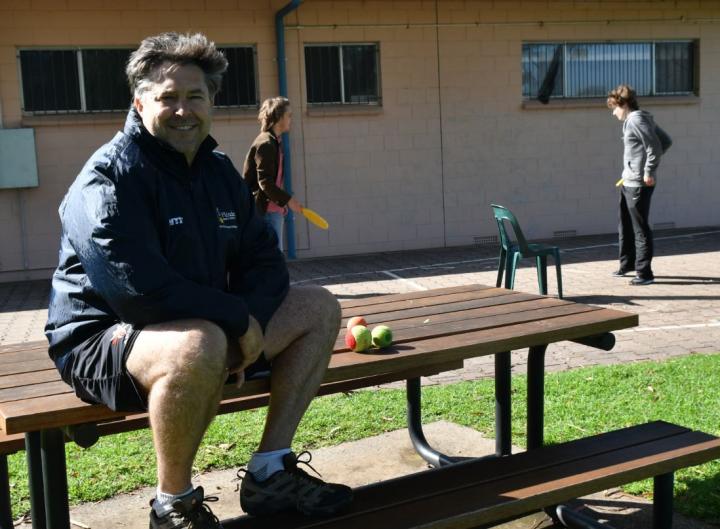Tennis program for teachers, coaches

Credit: Flinders University
Children are set to move more, improve their skills, and come up with their own creative tennis games with the launch of ‘HomeCourtTennis’, a new initiative to assist teachers and coaches with keeping kids active while at home.
Part one of the initiative, Games-making, will be introduced across Australia via a series of videos for teachers and coaches.
The free HomeCourtTennis content will support teachers in their physical education classes as they shift to distance learning, while coaches will use the material to remain connected to their players.
Games-making is designed to encourage students to create their own tennis games using various equipment from around their home environment, whether that is their lounge room, kitchen, bedroom, backyard, garage or driveway.
The initiative is supported by a new peer-reviewed research paper exploring this concept of games-making.
Written by Flinders University Associate Professor Shane Pill, Mitch Hewitt from Tennis Australia and Richard Baldock from the Australian Council for Health, Physical Education and Recreation (ACHPER), the paper puts a spotlight on the opportunity for coaches and teachers to challenge players and students to problem-solve, be creative and to design their own tennis games based on their choice and ability.
“With so many kids currently at home, it’s more important than ever to keep them active, motivated and engaged,” says Tennis Australia Chief Tennis Officer Matt Dwyer, who says ‘HomeCourtTennis’ has been designed to increase children’s physical activity as well as develop a range of skills, regardless of their playing space and equipment.
“For instance, kids may choose to use a balloon instead of a tennis ball and position two chairs together as a net – as you will see in these videos, anywhere can be a tennis court.
“Even more importantly, Games-making is designed to play to the individual strengths of each child, emphasising what they can do, and what they want to do, rather than what they can’t do – there are no limitations and we encourage them to get creative.”
HomeCourtTennis will provide a meaningful way for coaches and teachers to stay connected with their players and students during this challenging time, Mr Dwyer adds.
“Games-making also offers the opportunity for parents and children to play together at home and enjoy tennis as a game for all generations,” he added.
Physical Education and Sport Associate Professor Pill has been working with Tennis Australia since 2011 on development of Tennis for Schools Programs.
“The pandemic has shone a spotlight on the general decline in physical activity and increasing sedentary lifestyle in Australia,” says Associate Professor Pill.
“This initiative grew from the need to get more children, young people and adults active outside of PE.
“Backyard, driveway and even beach games of tennis are fun ways for everyone to learn tennis.
“Driveway tennis can be played anywhere, anytime, by anyone.”
Tennis Australia will share inspiration and creative ideas from HomeCourtTennis on its social media @TennisAustralia and digital channels.
Children can learn more about Games-making by getting in touch with their local tennis coach or teacher.
###
‘Driveway tennis: An example of sport teaching via games making in net/court games’ (2020) by S Pill, M Hewitt and R Baldock has been publisned in the Journal of Physical Education, Recreation & Dance, 91(2), 18-23 DOI: 10.1080/07303084.2019.1693452
Media Contact
Associate Professor Shane Pill
[email protected]
Original Source
https:/
Related Journal Article
http://dx.




